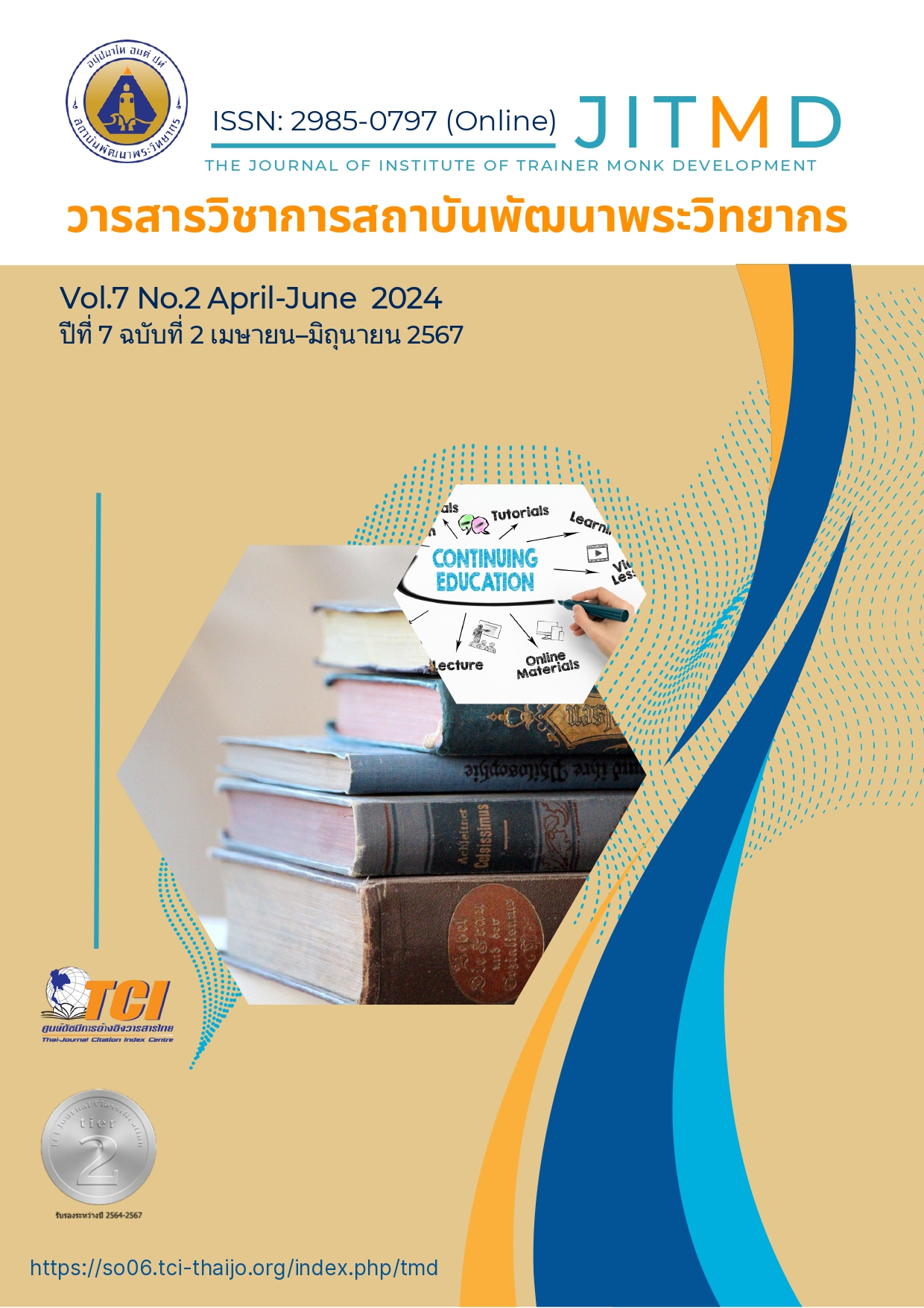The Development Learning of English Vocabulary Retention by Using English Vocabulary Game for Students in Prathomsuksa 6
Main Article Content
Abstract
This research aimed to 1) to determine the effectiveness of a learning activity using English vocabulary games to promote retention learning vocabulary the efficiency criterion of 80/80. 2) study English vocabulary retention learning vocabulary of student by using English vocabulary games 3) study the satisfaction of students toward the learning by using English vocabulary games. The samples used in this research were 40 students in Prathomsuksa 6/3 studying in the second semester of the academic year 2022 at Duangkamol School, Pathum Thani Province, using the simple random sampling. The instrument used to gather the data were 1) lessons plan activity using English vocabulary games 2) learning activity using English vocabulary games and 3) Pretest and Post-test 4) the satisfaction assessment form of the students towards the learning activities using English vocabulary games. The data were analyzed by t-test (t-test for dependent samples), mean (𝑥̅) and standard deviation (S.D.) The results of this research were 1) The average formative score was 84.12/86.08 which meets the set criterion (80/80). 2) The students who received the learning by using English vocabulary games had a statistically significant .05 higher scores on the post-test than before the study. 3) The students achieved retention a higher score in the posttest after two weeks than in the posttest significantly at level (𝑥̅ = 26.53), (S.D.) = 1.062 4) The students learning by using English vocabulary games satisfaction at higher level (𝑥̅ = 4.28)
Article Details

This work is licensed under a Creative Commons Attribution-NonCommercial-NoDerivatives 4.0 International License.
บทความที่ได้รับการตีพิมพ์เป็นลิขสิทธิ์ของวารสารวิชาการสถาบันพัฒนาพระวิทยากร
ข้อความที่ปรากฎอยู่ในบทความที่ได้รับการตีพิมพ์ในวารสาร ถือเป็นความรับผิดชอบของผู้เขียนบทความ และข้อคิดเห็นนั้นไม่ถือว่าเป็นทัศนะและความรับผิดชอบของกองบรรณาธิการวารสารวิชาการสถาบันพัฒนาพระวิทยากร
References
กรมวิชาการ กระทรวงศึกษาธิการ. (2551). หลักสูตรแกนกลางการศึกษาขั้นพื้นฐาน พุทธศักราช 2551. กรุงเทพฯ: ชุมนุมสหกรณ์การเกษตรแห่งประเทศไทย จำกัด.
ธูปทอง กว้างสวาสดิ์. (2559). 200 กิจกรรมสอนภาษาอังกฤษ. (พิมพ์ครั้งที่ 2). กรุงเทพฯ: สำนักพิมพ์จุฬาลงกรณ์มหาวิทยาลัย.
ภวิกา เลาหไพฑูรย์ และกมล โพธิเย็น. (2561). การสอนโดยใช้เกมเพื่อส่งเสริมความสามารถในการเขียนเลข 3 หลัก ของนักเรียนที่มีความบกพร่องทางสติปัญญา. วารสารวิชาการบัณฑิตวิทยาลัยสวนดุสิต, 14(2): 155-170.
ล้วน สายยศ และอังคณา สายยศ. (2538). “เทคนิคการวิจัยทางการศึกษา”. กรุงเทพ: สุวีริยาสาล์น.
สุวิทย์ มูลคำ และอรทัย มูลคำ. (2560). 19 วิธีจัดการเรียนรู้เพื่อพัฒนากระบวนการคิด.กรุงเทพมหานคร: ดวงกมลสมัย.
Wilkins, D. A. (1972). Linguistics in Language Teaching. London: Edward Arnold.

